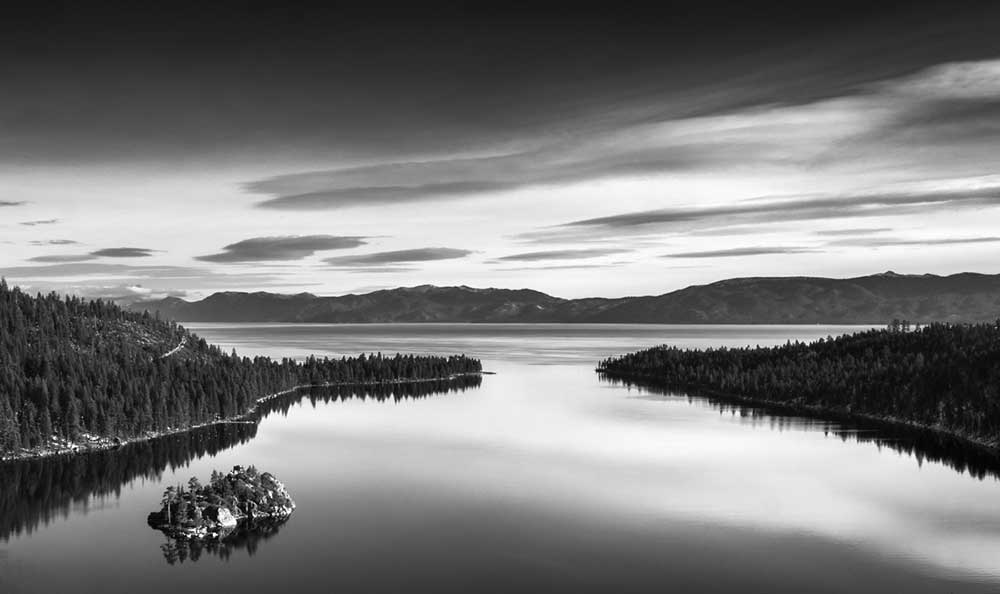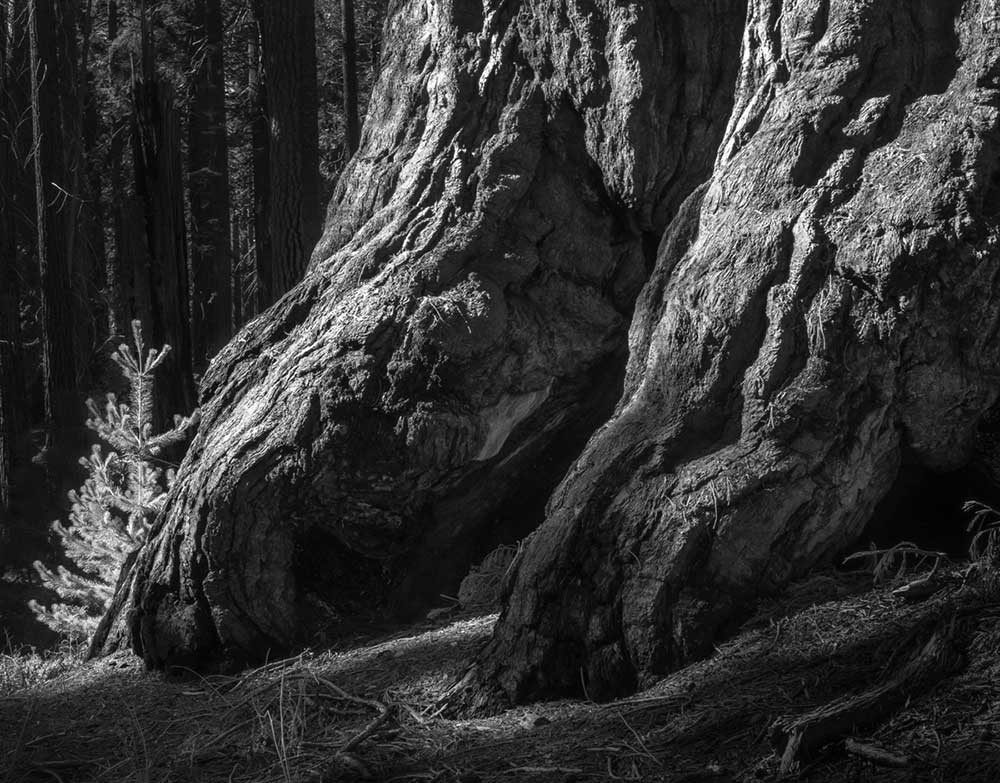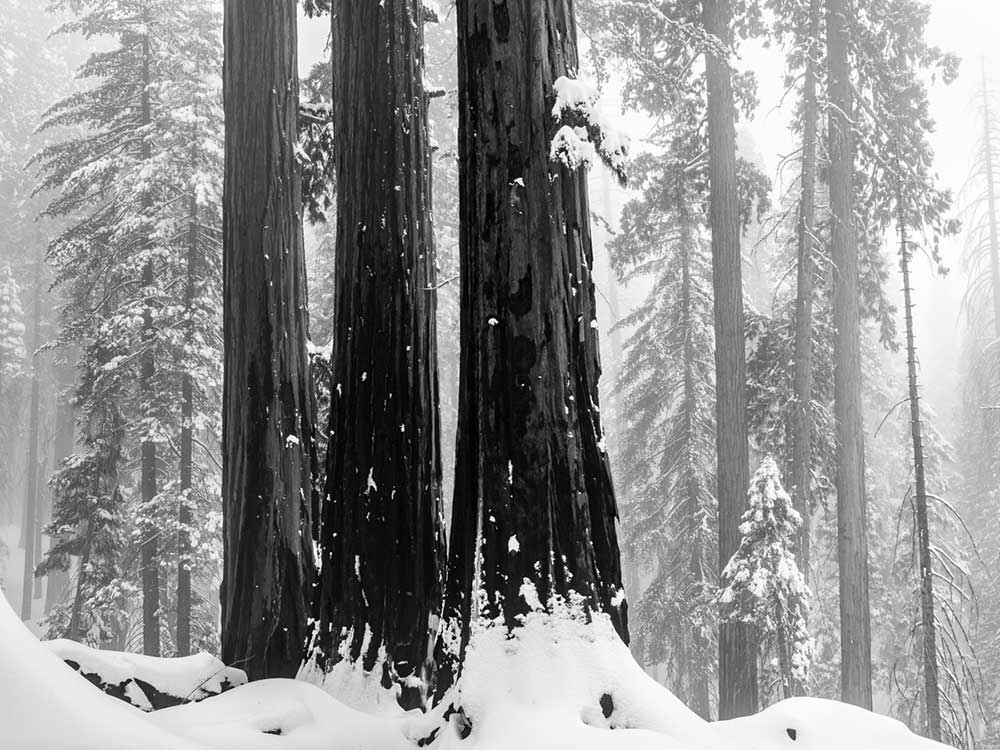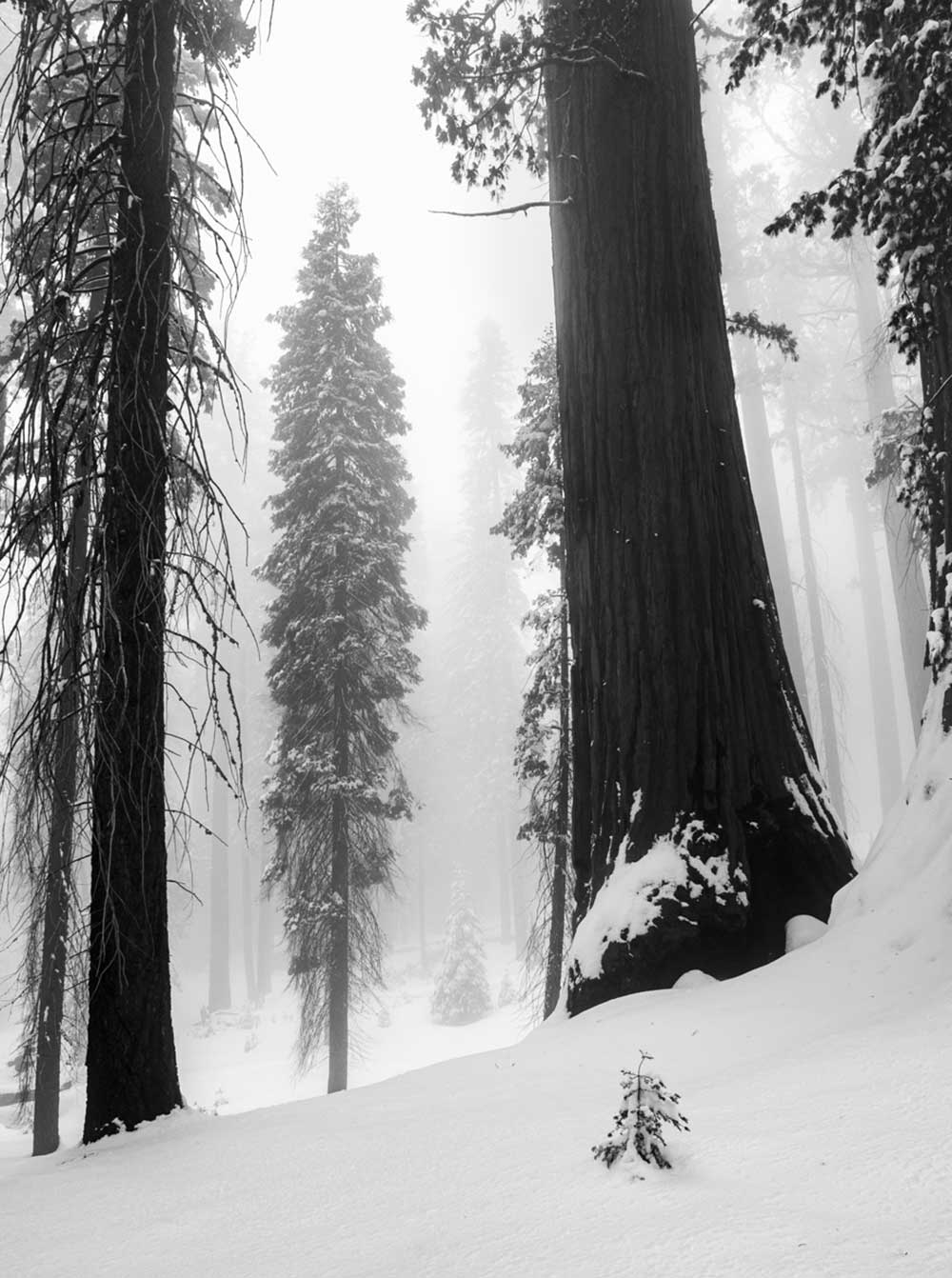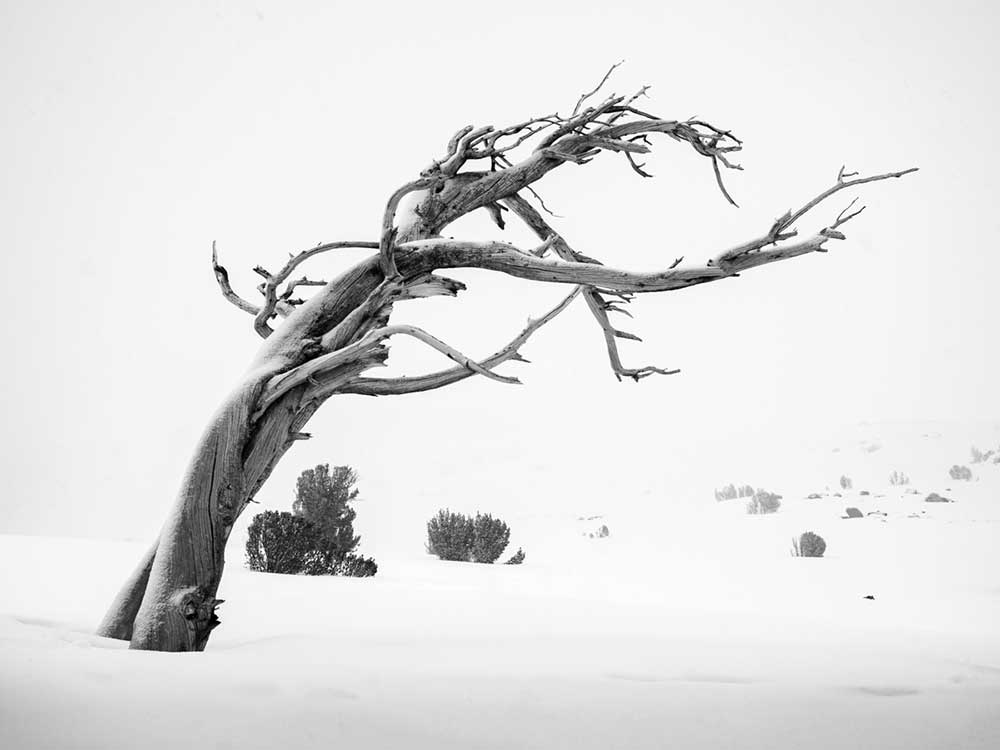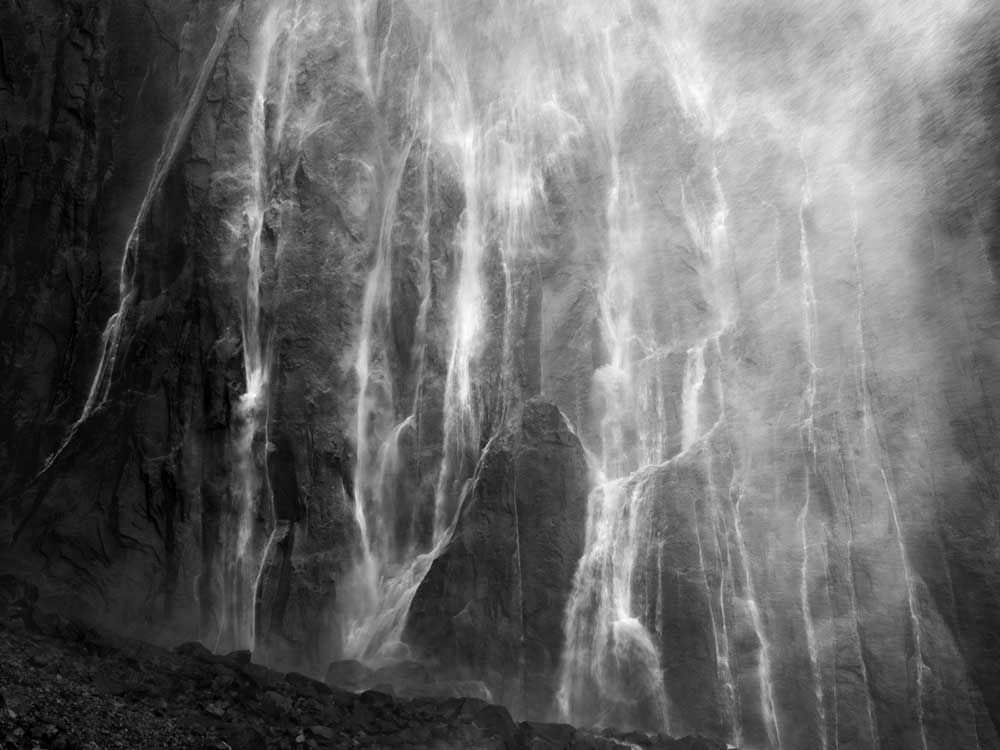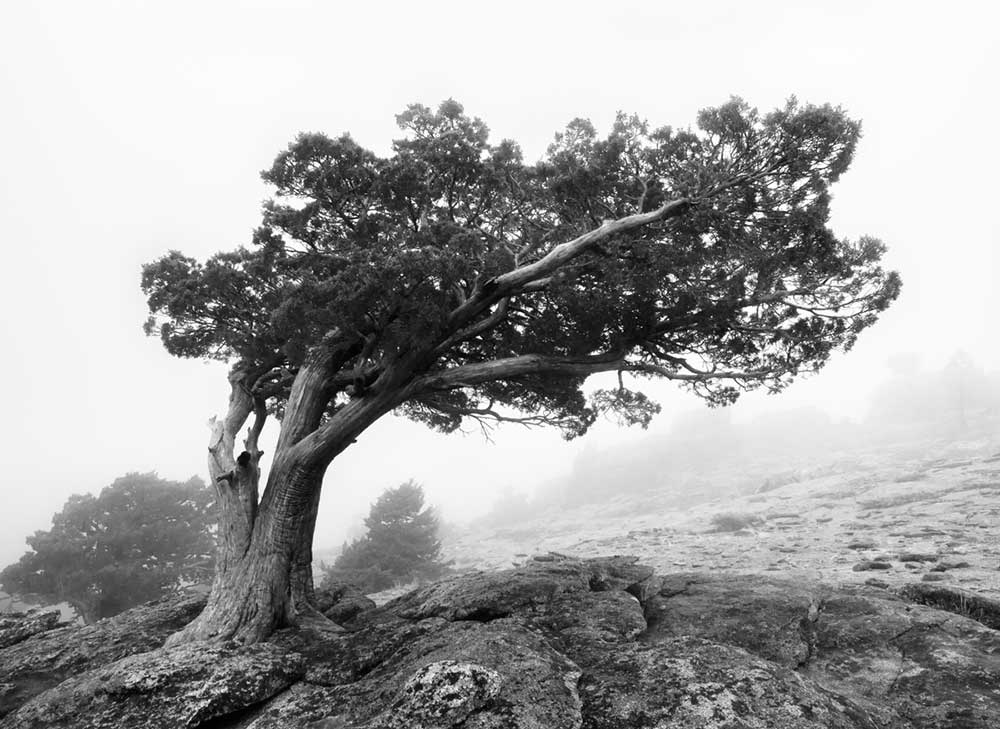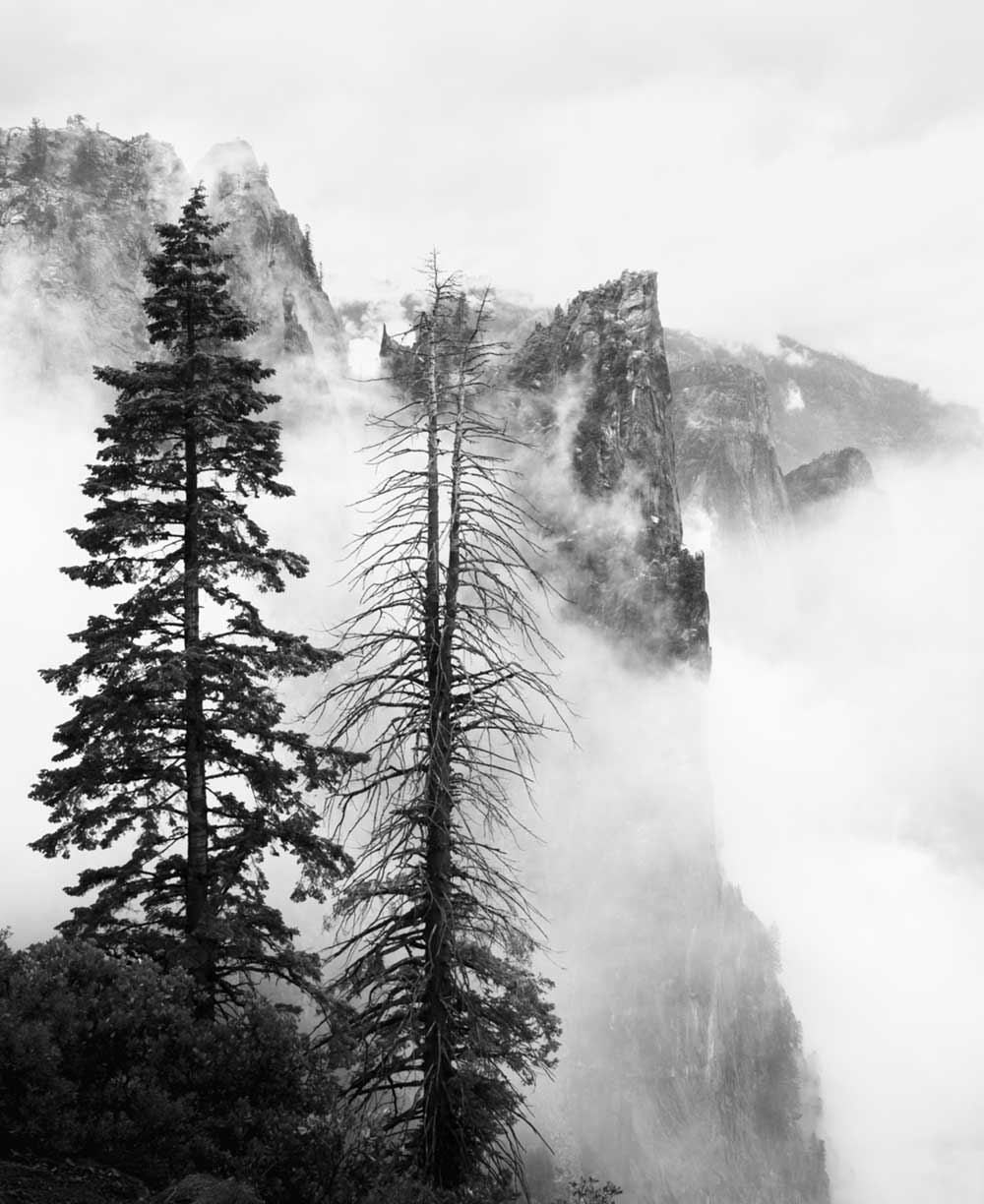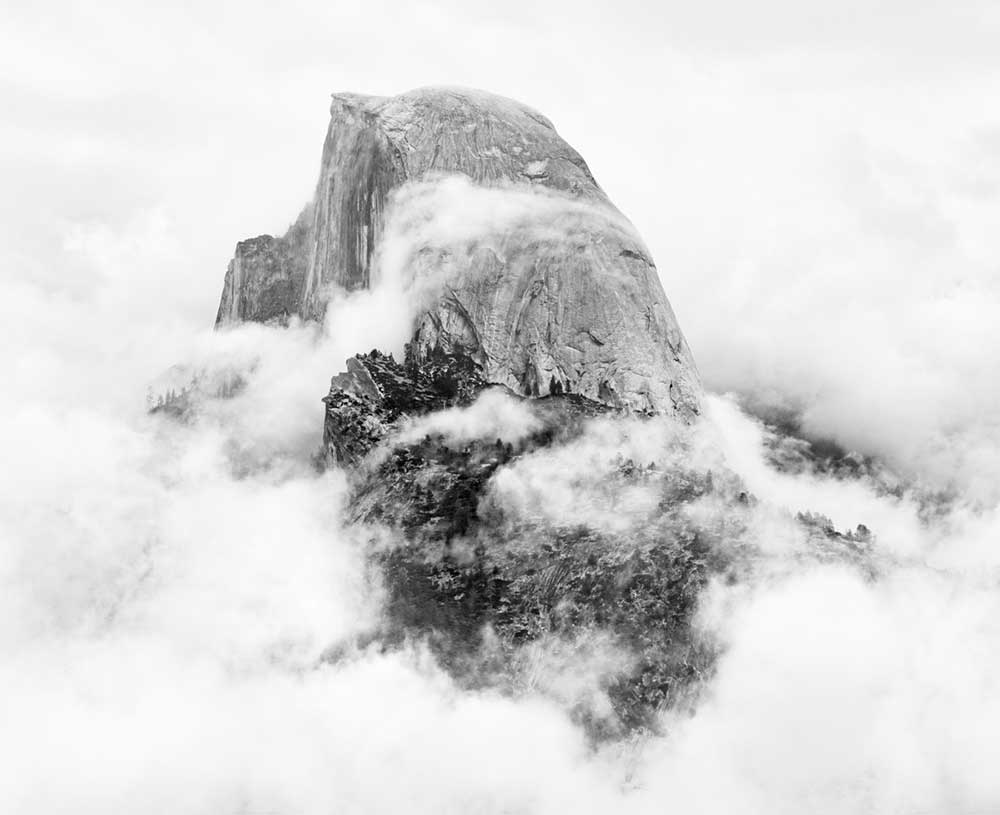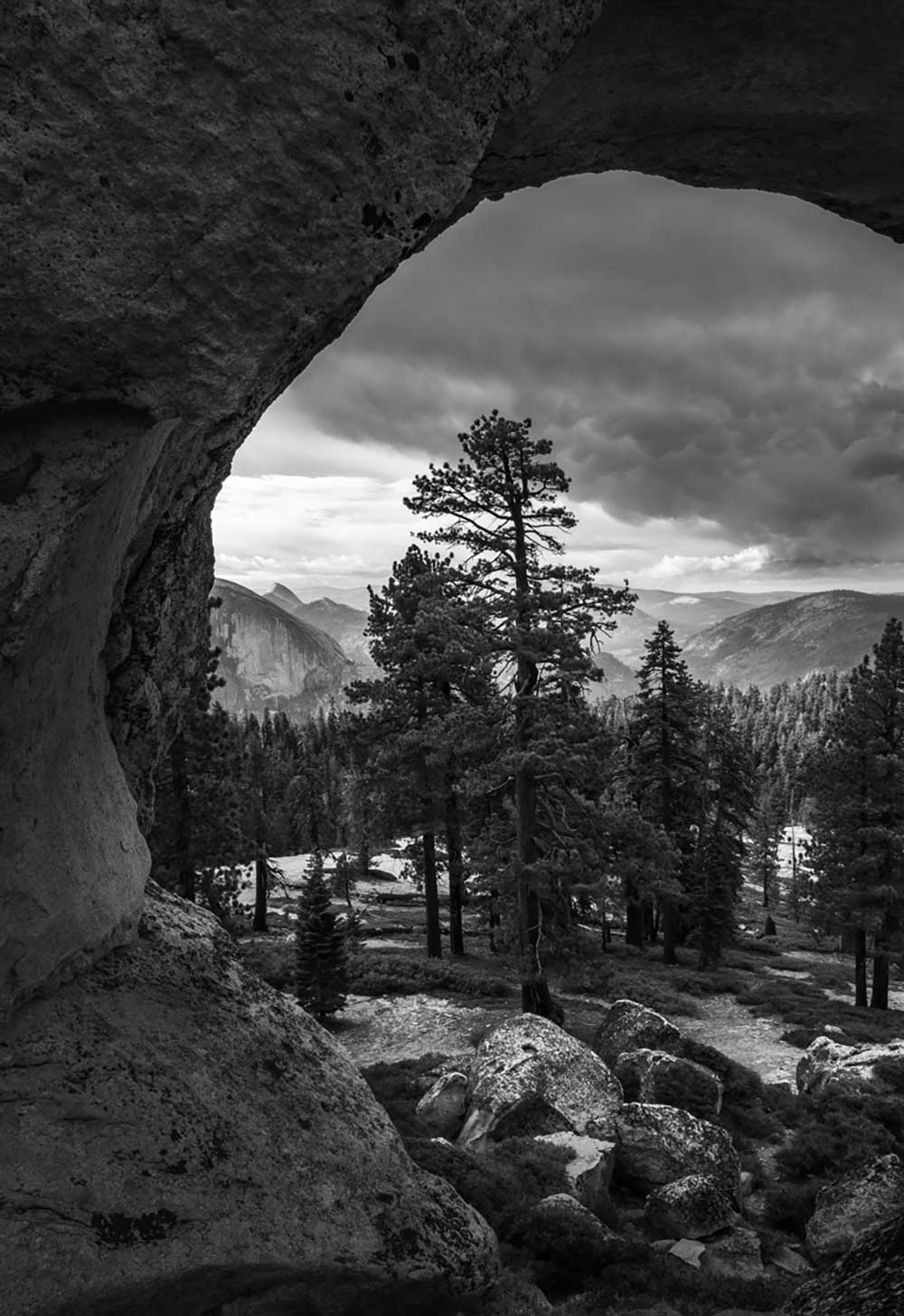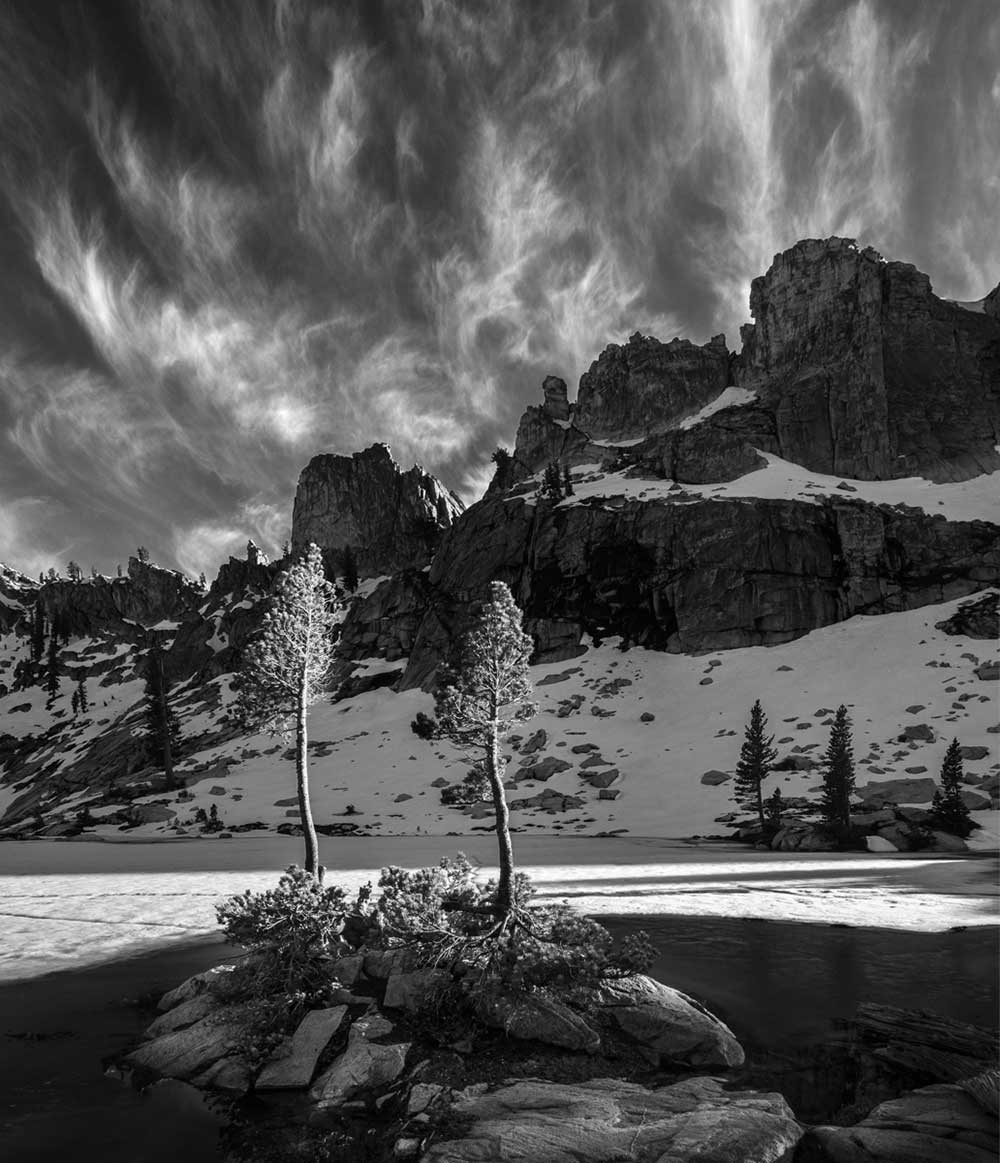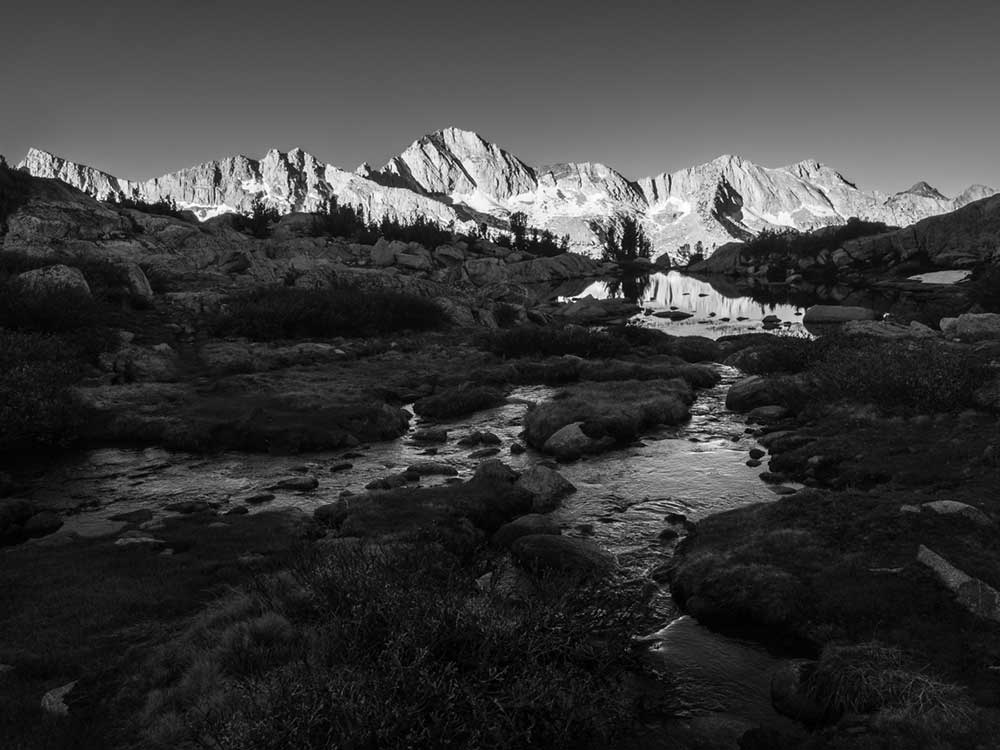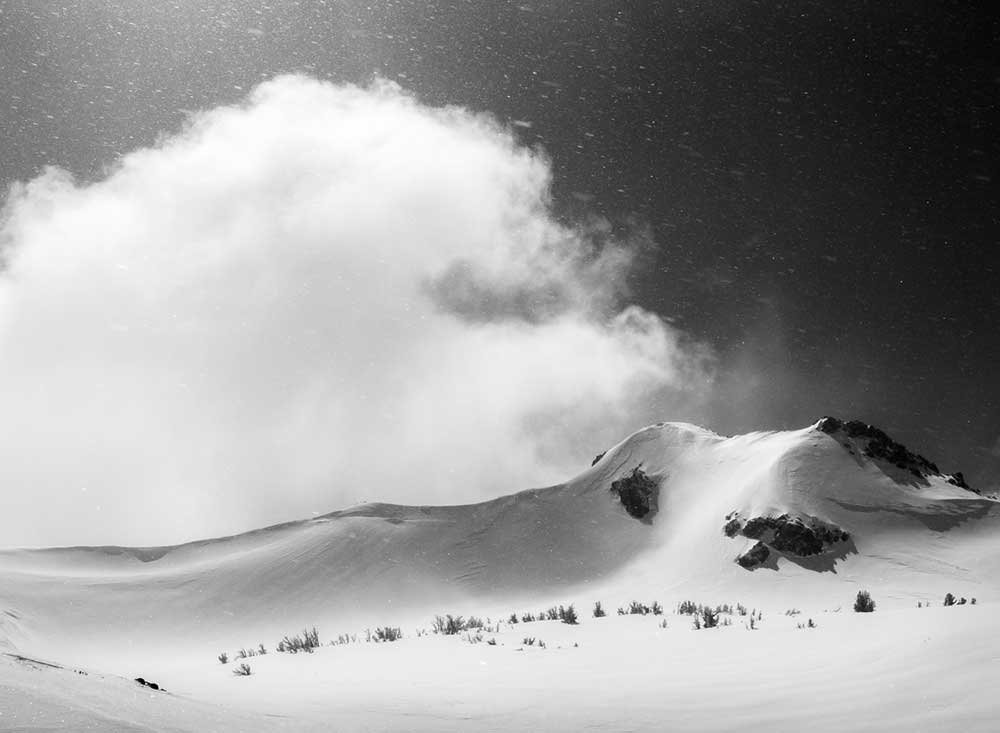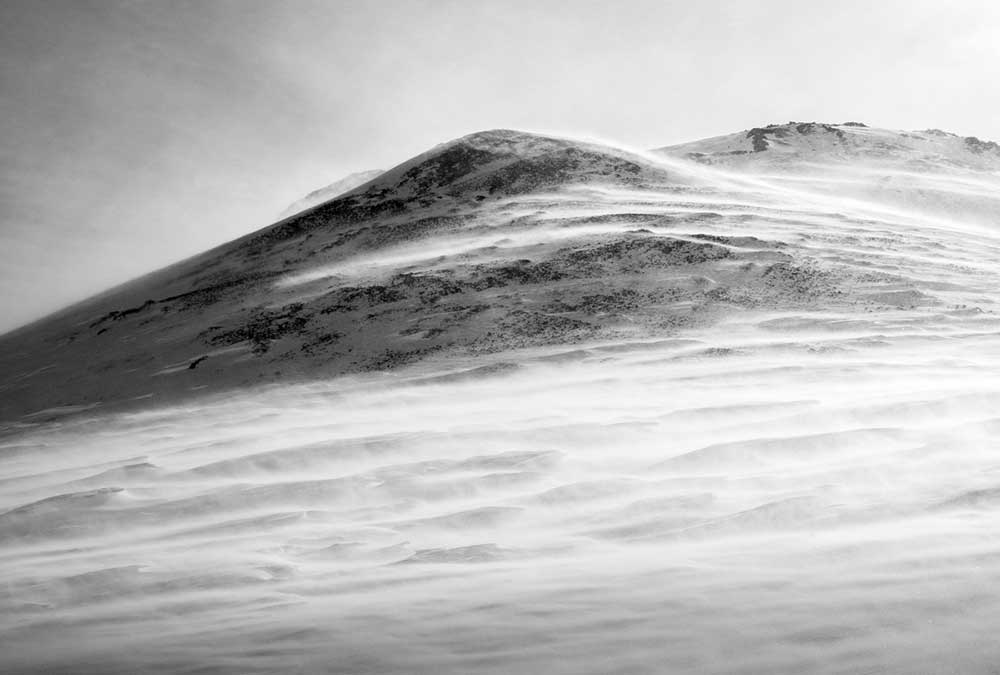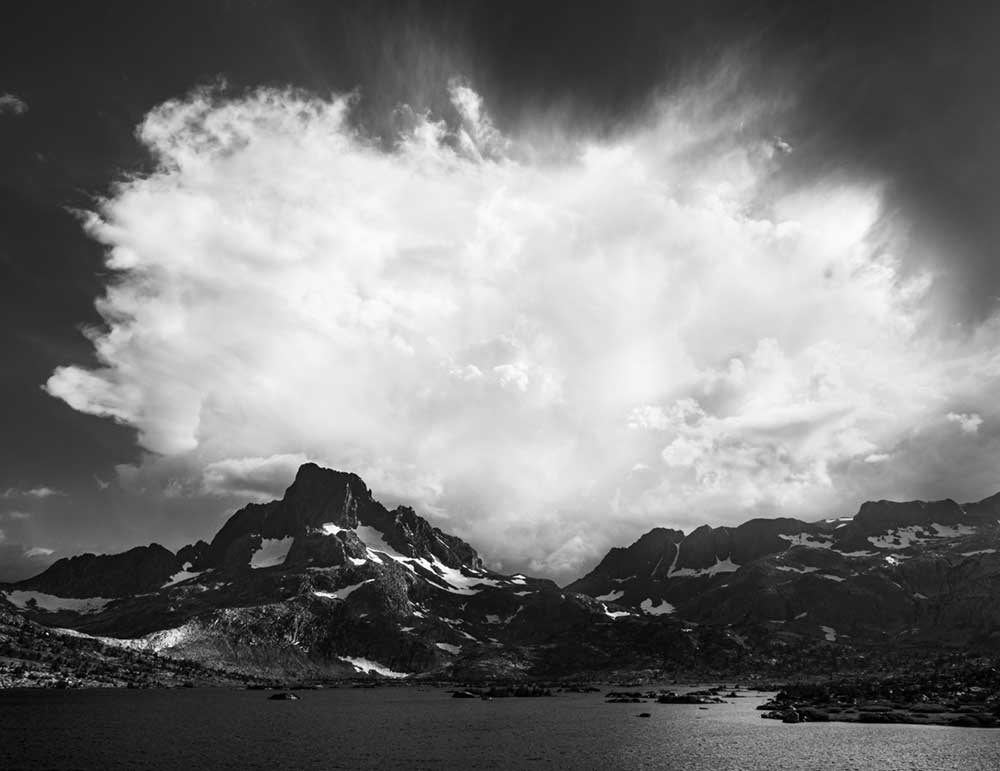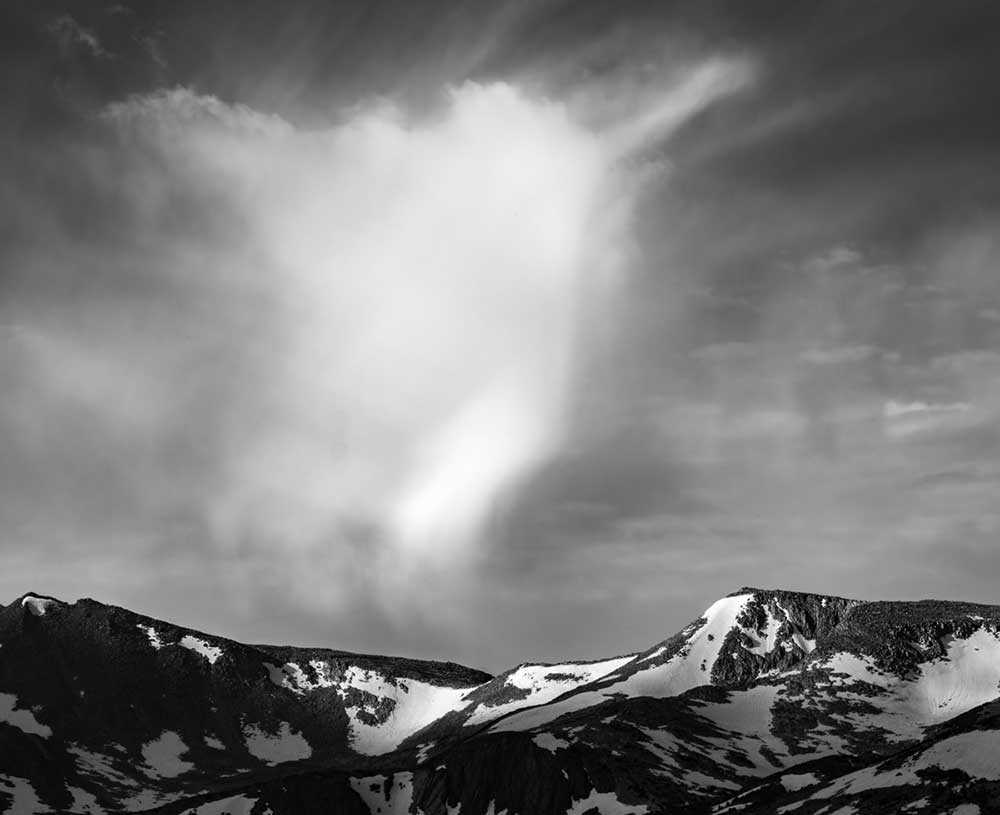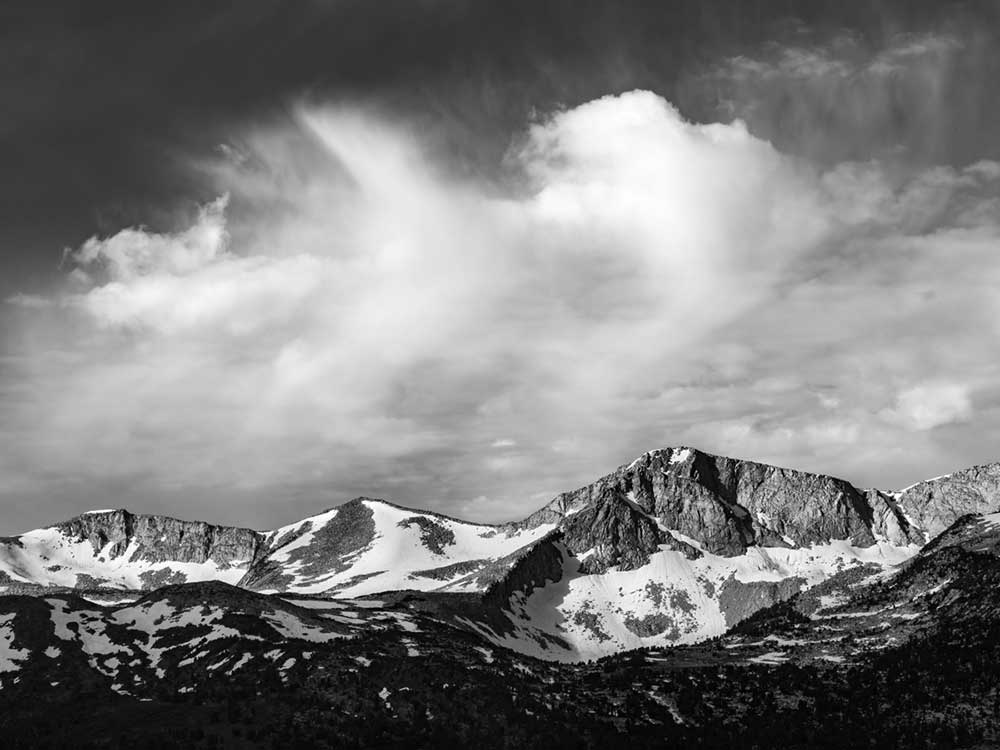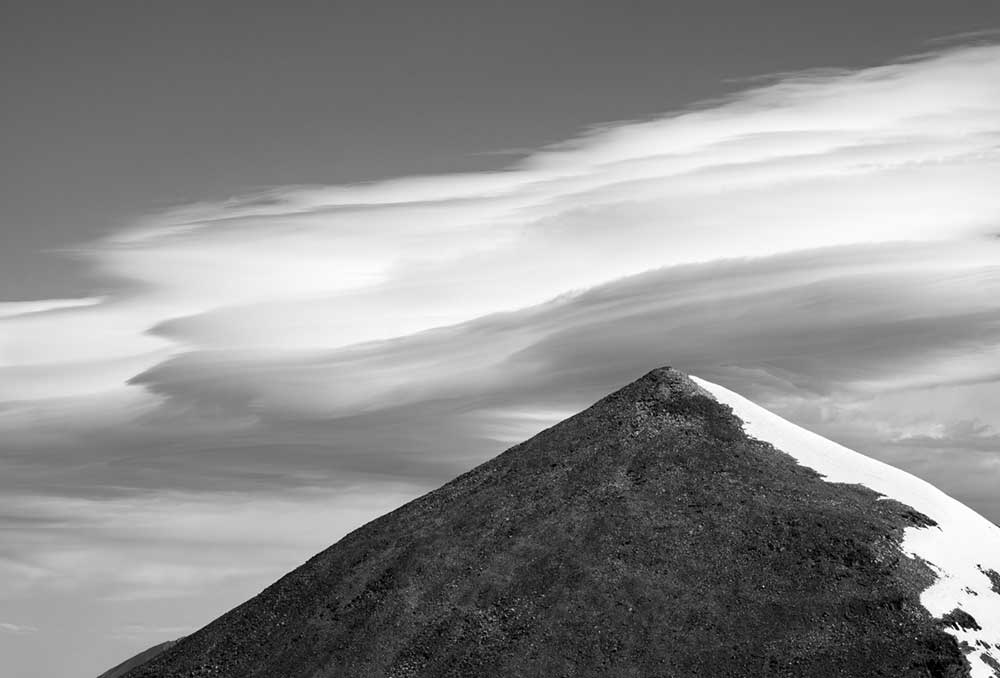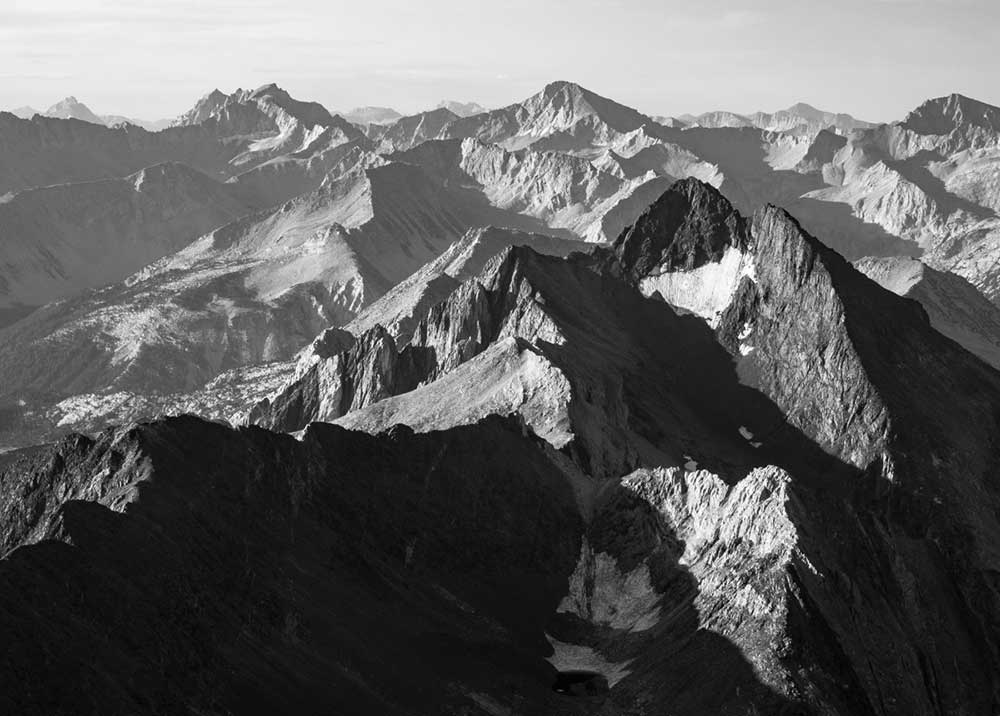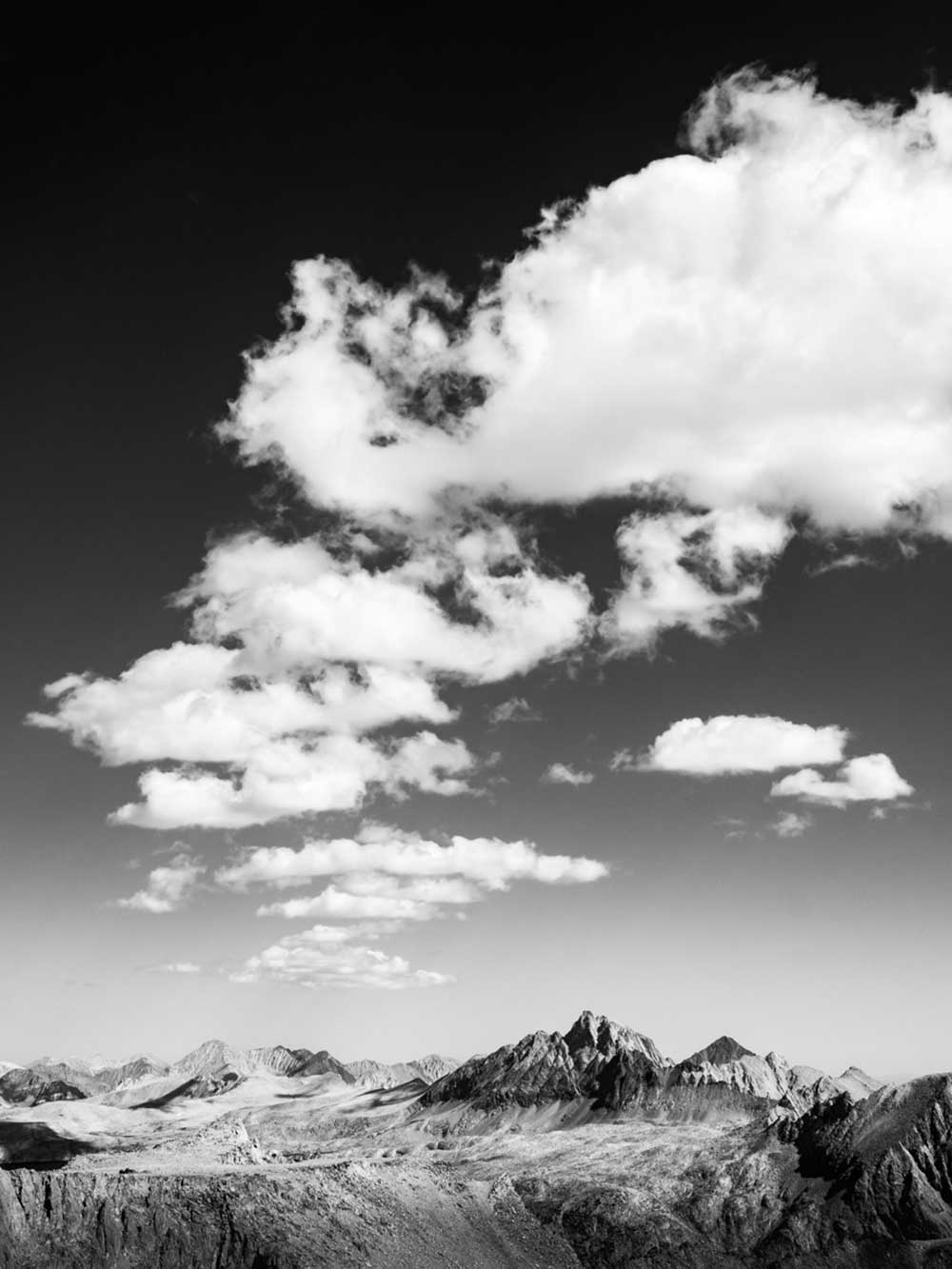These photos depict an ascent of the Sierra Nevada mountain range from where it begins at a few thousand feet, to its heights that reach above 14,000 ft
Ascending the Sierra from the western side, it begins to take shape as one reaches 4,000 ft, where the foothills give way to mountains. Here, the first landmarks of the Sierra appear, the giant sequoias. It takes a lot for something to not look small when compared to the mountains themselves, but the giant sequoias manage this task. Their lives are measured in millennia and their height in hundreds of feet. Although their numbers are relatively small, there are no other trees that are more befitting of the Sierra.
From here onward, one will be surrounded by a wide range of forests, rivers, waterfalls, and granite monoliths. Within the Sierra, nothing of nature feels missing or out of place; the views to admire its work are endless.
Ascending above 10,000 ft, leaving the forests behind, one will find high alpine meadows, windswept trees, and clear lakes, watched over by tall peaks.
Going beyond 12,000 ft, where even the hardiest forms of life are few, the landscape turns rocky and barren. One can find endless works of granite, jagged peaks, and the last of the glaciers finishing their slow work.
All of this culminates at 14,500 ft, atop Mount Whitney, the summit of the Sierra.
These photographs are a small set of the ones that I have taken during my first six years exploring the Sierra Nevada of California and Nevada, from 2017 to 2023. I hiked, climbed, and snowshoed nearly 2,000 miles of this mountain range during this period. I experienced and photographed it in all weather and seasons, in quiet forest, through meadows, across immeasurable amounts of snow, and atop the rocky expanses of its highest reaches.
These photographs are, as much as can be, true to the scenes as they were in the moment. I try to remain reserved in my alterations and respect the landscape, leaving it as I saw it, as best as I can, both in the photograph and on the trail.
About Aaron Vizzini
Aaron Vizzini currently works as a software engineer in Sacramento, California. Outside of his professional life, he is a wilderness landscape photographer, finding inspiration in the places he hikes. On any given weekend, it’s likely that he is somewhere hiking. He is just as happy strolling through a sequoia grove as climbing a 14,000 ft volcano, always searching for the next landscape to admire and photograph.
Originally from Ebensburg, Pennsylvania, Aaron attended Saint Francis University, earning a Bachelor of Science degree in Computer Science. After graduating in 2014, he went on to obtain a Master’s degree at ESIGELEC in Rouen, France. He studied and worked in France until 2017, living in Rouen and Toulouse before moving to California.
It was at Saint Francis University where Aaron, by chance, signed up for a photography class to fulfill an art requirement for his degree, not realizing at the time how much of an impact that class would have on his future. Thanks to an inspiring art professor and a newly discovered passion, he pursued photography throughout college. These classes provided an artistic escape from the science classes that were part of his primary studies.
Photography, combined with his hiking, has remained a large part of his life over the past decade. Digital photography is his primary medium, although he has branched out to film and darkroom printing in recent years, finding new ways to explore this art.
From nearly the start, Aaron has gravitated towards black and white photography for his landscapes. He finds that wilderness landscapes lend themselves well to being photographed in black and white. The shapes, textures, light, and overall atmosphere of a landscape become more pronounced in monochrome. Story and emotion can be drawn out from a scene, which may otherwise be imperceptible in color.
Aaron has had the fortunate opportunity for his work to be exhibited in solo and group exhibitions throughout California and elsewhere in the United States, as well as in publications. He hopes that his photography may transport viewers, if only briefly, into these incredible moments in time and perhaps convince them to head into the wilderness to discover their own. According to him, a photograph will never be a substitute for a day spent in the mountains. [Official Website]



